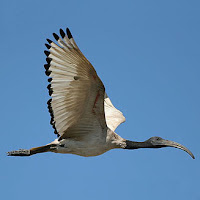This image of the Ibis model by Oscar Rojas, showing us one of the most representative positions Ancient Egyptians gave to this bird in their amazing art, provides an introduction to this short article about the Ibis and its meaning for the Egyptians of those remote times.
The ibis is a wading and migratory bird, moving between southern Europe and Africa, depending on rainfall conditions in the region. Their breeding areas are located south of the Sahara and in southeastern Iraq. The ibises are seen on the banks of rivers, lakes and swamps, looking in the mud for small invertebrates and supplementing their diet with eggs of other birds.
The ancient Egyptians knew three types of ibises, but only two of them had religious significance. The crested ibis represented one of the component parts of the human being related to the spirit after death and the sacred ibis was the representation of the god Thoth, a very important god for human afterlife. Hence, in many tombs of ancient Egypt is common to see statues of ibis especially in its knee position.

Thoth was venerated as a deity since the earliest days of the empire. His main cult take place in Hermopolis, Middle Egypt. He is represented as an human with an ibis or baboon head. Thoth was the god of the time, the chronology, accounts and mathematics. He was responsible for counting the years of each pharaon rule and write it in the leaves of the sacred tree. He was the inventor of writing and speech, keeper of divine order, rituals and patron of scribes. In the afterlife trial in front of Osiris, Thoth related the deeds of the death that he has write in a piece of wood.
In 1964 British Egyptologist Walter Bryan Emery discovered the fascinating catacombs of the ibis near the oldest pyramid: the Step Pyramid of Sakkara.
While searching for the tomb of Pharaoh Imhotep (deeply related to the god Thoth) were discovered a maze of tunnels with many burial chambers where the mummified ibis were placed. Amazingly there were counted about a million and a half ibises.

It is not sure why this religios cult was so prolific, but probably the ibis were presented as offers for Thot and after that they sacrified and mummified them.







No comments:
Post a Comment